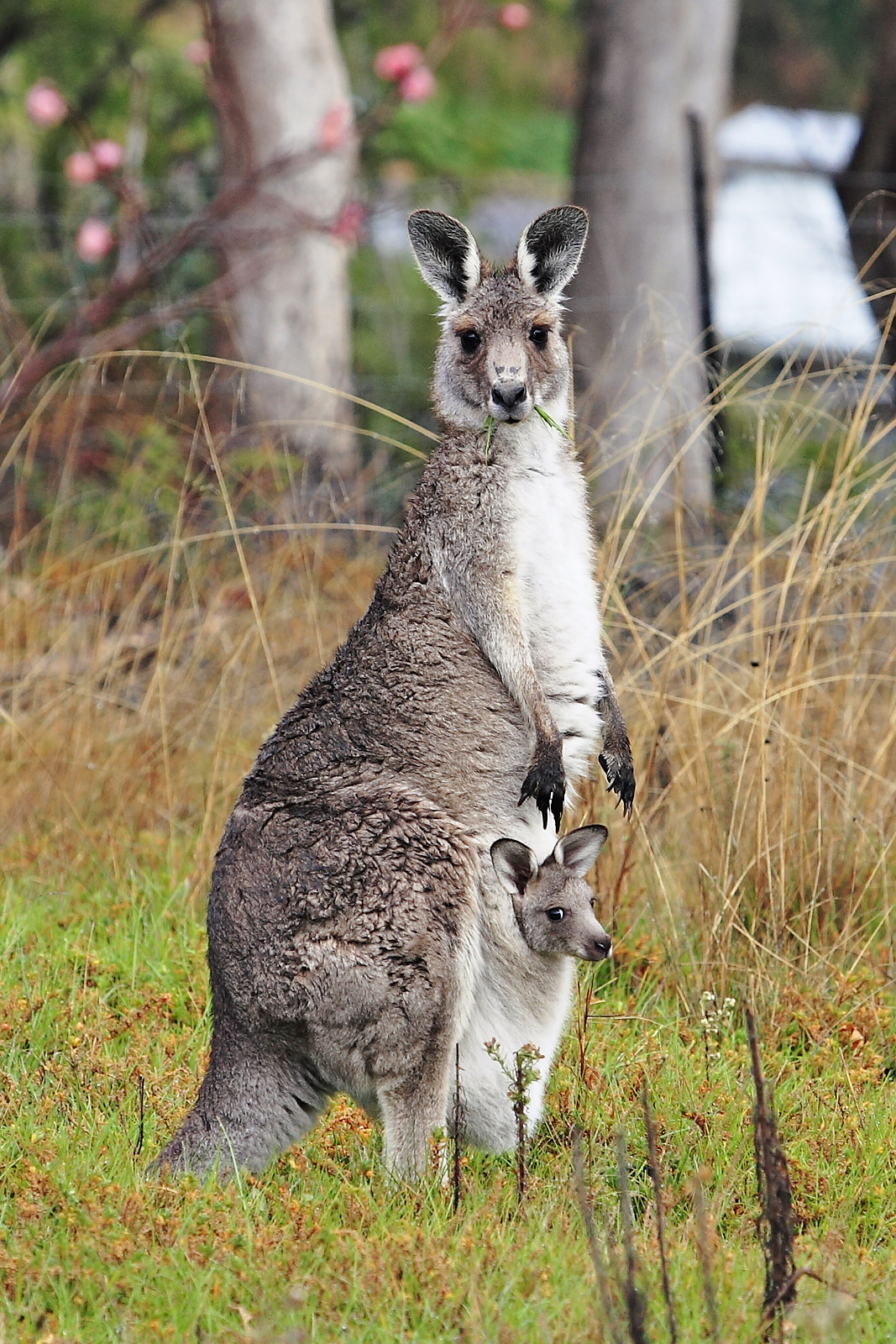
The word kangaroo derives from the Guugu Yimithirr word gangurru, referring to grey kangaroos. The name was first recorded as "Kangooroo or Kanguru" on 4 August 1770, by Lieutenant (later Captain) James Cook on the banks of the Endeavour River at the site of modern Cooktown, when HM Bark Endeavour was beached for almost seven weeks to repair damage sustained on the Great Barrier Reef. Guugu Yimithirr is the language of the people of the area.
A common myth about the kangaroo's English name is that "kangaroo" was a Guugu Yimithirr phrase for "I don't understand you." According to this legend, Lieutenant Cook and naturalist Sir Joseph Banks were exploring the area when they happened upon the animal. They asked a nearby local what the creatures were called. The local responded "Kangaroo", meaning "I don't understand you", which Cook took to be the name of the creature. The Kangaroo myth was debunked in the 1970s by linguist John B. Haviland in his research with the Guugu Yimithirr people.
Kangaroos are often colloquially referred to as roos. Male kangaroos are called bucks, boomers, jacks, or old men; females are does, flyers, or jills, and the young ones are joeys. The collective noun for kangaroos is a mob, troop, or court. Mobs usually have ten or more kangaroos in them. Living in mobs provides protection for some of the weaker members of the group.
Biology and behaviour
Kangaroos are the only large animals to use hopping as a means of locomotion. The comfortable hopping speed for Red Kangaroo is about 20–25 km/h (13–16 mph), but speeds of up to 70 km/h (44 mph) can be attained, over short distances, while it can sustain a speed of 40 km/h (25 mph) for nearly 2 kilometres (1.2 mi). This fast and energy-efficient method of travel has evolved because of the need to regularly cover large distances in search of food and water, rather than the need to escape predators.[citation needed] To move at slow speeds, it uses its tail to form a tripod with its two forelimbs it then raises its hind feet forward.
The average lifespan of kangaroos averages at 6 years in the wild to in excess of 20 years in captivity, varying by species. Most individuals, however, do not reach maturity in the wild.
Diet
Different species of kangaroos have different diets, although all are strict herbivores. The Eastern Grey Kangaroo is predominantly a grazer eating a wide variety of grasses whereas some other species (e.g. the Red Kangaroo) include significant amounts of shrubs in the diet. The smaller species of kangaroos also consume hypogeal fungi. Many species are nocturnal and crepuscular, usually spending the days resting in shade and the cool evenings, nights and mornings moving about and feeding.
Because of its grazing, kangaroos have developed specialised teeth. Its incisors are able to crop grass close to the ground, and its molars chop and grind the grass. Since the two sides of the lower jaw are not joined together, the lower incisors are farther apart, giving the kangaroo a wider bite. The silica in grass is abrasive, so kangaroo molars move forward as they are ground down, and eventually fall out, replaced by new teeth that grow in the back.
Blindness
Eye disease is rare but not new among kangaroos. The first official report of kangaroo blindness took place in 1994, in central New South Wales. The following year, reports of blind kangaroos appeared in Victoria and South Australia. By 1996, the disease had spread "across the desert to Western Australia".[citation needed] Australian authorities were concerned that the disease could spread to other livestock and possibly humans. Researchers at the Australian Animal Health Laboratories in Geelong detected a virus called the Wallal virus in two species of midge, believed to have been the carriers. Veterinarians also discovered that less than three percent of kangaroos exposed to the virus developed blindness.
No comments:
Post a Comment